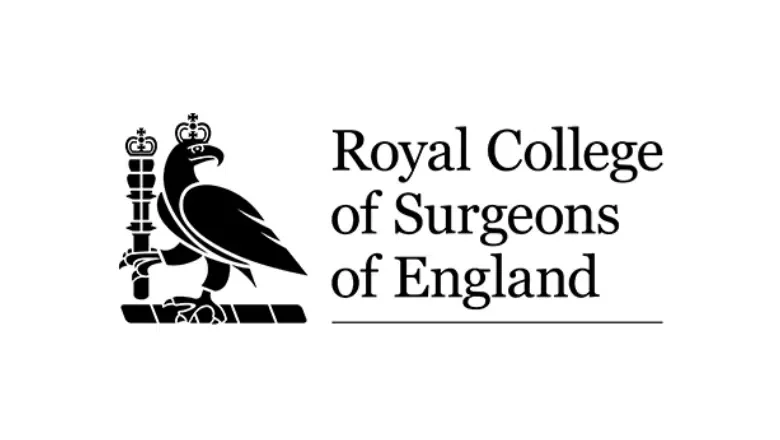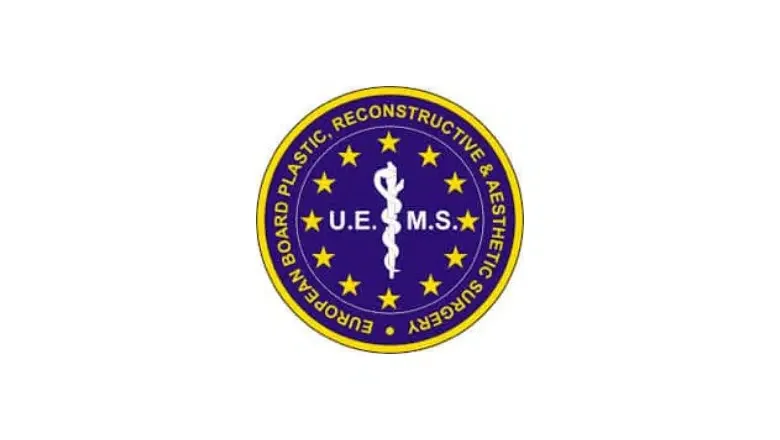Understanding the Similarities and Differences Between Silicone and Saline Breast Implants
When thinking about breast enlargement surgery, it’s important to understand that there are two main types of breast implants you can choose from: silicone and saline. Both types have their own advantages and are suited for different individuals based on their needs.
Centre for Surgery in London is renowned for expertise in breast surgery. We pride ourselves on collaborating with some of the UK’s leading plastic surgeons. These experts have completed numerous breast surgeries, ensuring that they have the knowledge and experience to guide you. If you’re trying to decide between silicone and saline breast implants, our team can help you determine which option will provide the most natural look and have long-lasting effects for your specific circumstances.
Understanding Saline Breast Implants
Saline breast implants have been a popular choice for breast enlargement surgeries for a long time. Let’s break down what they are and their advantages and disadvantages:
What are Saline Implants? Saline implants consist of a silicone outer shell that is initially empty. During the breast augmentation surgery, this shell is filled with sterile salt water, or saline solution.
Advantages of Saline Implants:
Smaller Incision
Because the implant is filled during the surgery and not beforehand, the incision made to place the implant can be smaller and therefore may be less visible.
Cost-effective
Generally, saline implants are more affordable than their silicone counterparts.
Disadvantages of Saline Implants:
Visibility and Texture
A notable downside of saline implants is that they can sometimes be seen underneath the skin, leading to a wavy or rippling appearance.
Feel
Some individuals have noted that saline implants can feel harder or more firm than natural breast tissue. Additionally, there’s the potential for what’s sometimes referred to as the ‘water hammer’ effect, which can be off-putting for some.
Silicone Breast Implants
Silicone breast implants are another option to consider if you’re thinking about breast enlargement. Here’s a detailed look at what they are, along with their advantages and potential drawbacks:
What are Silicone Implants?
Silicone implants are filled with a silicone gel, which is a man-made material. The exterior casing of these implants is also made of silicone, ensuring consistency in the material both inside and out. They come in a diverse range of types, sizes, and shapes, giving you plenty of options to find the perfect fit for your body and your desired look.
Advantages of Silicone Implants:
- Natural Feel: One of the standout features of silicone implants is their likeness to natural breast tissue in terms of texture and feel. This makes them a preferred choice for many who want a more natural-looking and feeling result.
- Variety: With a range of sizes, shapes, and types available, silicone implants offer more customisation options, allowing you and your surgeon to pick the best fit for your physique and goals.
Disadvantages of Silicone Implants:
- Risks of Rupture: A concern with silicone implants is the risk of them rupturing. While the silicone gel typically stays within the implant shell or scar tissue if a rupture occurs, it’s still a concern.
- Regular Monitoring: If you opt for silicone implants, it’s recommended to have periodic MRI scans to ensure the implants remain intact and to detect any potential ruptures early on.
A Glimpse into the History of Breast Implants
Taking a trip down memory lane, the journey of breast implants over the decades has been quite fascinating. Let’s dive into a brief history of how these implants have evolved:
Silicone Gel Implants – The Beginning
The use of silicone gel implants dates back to the 1960s. Since then, there have been numerous iterations, with each version aiming to be safer and more effective than its predecessor. The constant innovation is a testament to the dedication experts have in refining and enhancing the product for optimal results.
The Rise of Saline Implants
Fast forward to the 1990s and early 2000s, and saline implants started gaining significant traction. Their popularity stemmed from various factors, one being the perceived safety aspect of using sterile salt water.
Generational Improvements
Today, the world of breast augmentation has reached the 7th and 8th generations of implants. These newer versions boast impressive advancements over their forerunners. For instance, the latest generation of implants has a 96% fill, while the preceding one had an 85% fill. But what does this mean? The higher the fill percentage, the less likely the implant is to wrinkle or ripple.
Consistency Matters
Modern implants are celebrated for their cohesive nature. This means the gel inside is stickier, which can help the implant maintain its shape better and potentially reduce the risk of leakage.
RELATED: History of Breast Implants & Breast Augmentation
Which One is Safer: Silicone or Saline Breast Implants?
When deciding between silicone or saline breast implants, safety is a primary concern. Here’s a comparative analysis based on the information provided:
Both saline and silicone implants are deemed safe when the procedure is carried out by a highly skilled surgeon, such as those at the Centre for Surgery. Like with any surgical procedure, the expertise of the surgeon plays a crucial role in the overall safety and success of the operation.
Breast Implant Illness (BII): There’s a small fraction of individuals who report experiencing symptoms of what has been termed “Breast Implant Illness” or BII. Symptoms include a range of medical concerns like fatigue, persistent headaches, body aches, confusion or “brain fog”, and gastrointestinal problems. However, it’s vital to note that, as of now, there isn’t concrete scientific evidence linking breast implants directly to BII.
RELATED: Is There A Breast Implant Illness Test?
Interestingly, some patients have reported feeling better after removing their implants, although the exact reasons remain under investigation.
RELATED: Latest Update on Breast Implant Illness – Symptoms & Treatment
Regardless of whether you opt for saline or silicone implants, there are general guidelines to follow to ensure long-term safety:
Replacement
It’s advisable to consider replacing your implants approximately every 10 years. This doesn’t mean that every implant will fail or cause problems after a decade, but it’s a general guideline to ensure longevity and safety.
Regular Checks
Regular scans, such as MRIs, are recommended for silicone implants to check their integrity and detect potential issues early on.
Understanding Implant Rupture: Saline Vs. Silicone
Implant rupture, though not common, is a potential risk associated with both saline and silicone implants. Let’s delve into how ruptures manifest in both types of implants and the subsequent steps to take:
Saline Implants Rupture:
Immediate Visibility
One of the more obvious indicators of a rupture in saline implants is the sudden deflation of the breast. This will make it look noticeably smaller or misshapen.
Body Absorption
The good news is that the saline solution inside the implant is sterile, meaning that if it leaks, your body will naturally absorb it without causing harm.
Next Steps
If you experience a rupture, surgical intervention will be necessary to remove the damaged implant. After removal, you can choose to replace it with a new implant or not, based on your preference.
Silicone Implants Rupture:
Silent Rupture
Unlike saline implants, a rupture in a silicone implant isn’t always immediately visible. This is because the silicone gel often remains within the scar tissue (fibrous capsule) that forms around the implant. Such a rupture is commonly referred to as a ‘silent rupture’.
Symptoms to Observe
Over time, the rupture may result in a change in the size or firmness of the breast. Other potential signs include breast pain and alterations in breast shape.
Next Steps
If you suspect a rupture or experience any of the symptoms mentioned, seek medical attention. A ruptured silicone implant will need to be surgically removed. After extraction, you have the option to replace it with a new implant if you wish.
RELATED: What Happens If A Breast Implant Ruptures?
Exploring the Common Ground: Similarities between Silicone and Saline Breast Implants
While silicone and saline implants have their differences, they share several similarities due to their primary purpose – enhancing breast aesthetics. Let’s take a closer look:
-
Customisability:
- Both saline and silicone implants can be tailored to meet individual preferences and desired outcomes.
- Surgeons can adjust various aspects of the implants, including their size, profile (how far they project from the chest), and placement (above or below the chest muscle).
-
Built to Last:
- Both types of implants come encased in a durable silicone outer shell.
- While they’re designed with longevity in mind, lasting anywhere from 10 to 15 years on average, the exact duration can vary based on individual factors and circumstances.
- As a result, medical professionals often recommend periodic check-ups and consider replacement or removal around the 10-year mark.
-
Safety Approvals:
- When it comes to safety credentials, both silicone and saline breast implants have secured approval from the Food and Drug Administration (FDA). This approval is indicative of the extensive testing and scrutiny these products have undergone to ensure they meet safety standards.
- Therefore, individuals can feel confident in choosing either implant type from a safety perspective.
Key Differences between Silicone and Saline Implants
Breast implants come in various materials, primarily silicone and saline. While they share some similarities, there are notable differences between the two:
-
Composition:
- Saline: These implants have a silicone outer shell but are filled with sterile saline (salt water).
- Silicone: These implants also have a silicone outer shell, but their interior is filled with a thick silicone gel.
-
Surgical Approach:
- Saline: One advantage of saline implants is the incision size. Because they are filled after being inserted into the breast pocket, the required incision is generally smaller.
- Silicone: As these are prefilled, they necessitate a more extended incision for placement.
-
Detecting Ruptures:
- Saline: If a saline implant leaks or ruptures, the breast will appear deflated almost instantly, making ruptures easily noticeable. The body safely absorbs the saline solution.
- Silicone: A rupture in silicone implants can be subtle and hard to detect because the silicone gel often stays within the surrounding tissue, leading to what’s called a “silent rupture.”
-
Aesthetic Appeal:
- Silicone: Generally, silicone implants tend to mimic the feel and appearance of natural breast tissue closely, which is why many feel they offer a more natural result.
- Saline: These can sometimes present a rippling or wrinkling effect, especially if the skin over the implant is thin. This makes them look and feel less like natural breasts compared to silicone implants.
-
Price Point:
- Saline: Typically, saline implants are less expensive than their silicone counterparts, affecting the overall cost of the augmentation procedure.
- Silicone: These implants usually come at a higher cost, reflecting their more natural feel and the technology behind them.
Cost Considerations: Silicone Vs. Saline Breast Implants
Opting for breast implants is often a significant financial decision, given that most health insurance plans don’t cover elective cosmetic surgery. When planning for such a procedure, it’s essential to understand the cost elements associated with both silicone and saline implants. Here’s a breakdown:
Initial Cost:
-
- Silicone Implants: Generally, silicone implants are more expensive than saline implants due to their more natural feel and appearance, and the advanced technology behind them.
- Saline Implants: While saline implants tend to be less costly upfront than silicone implants, the overall aesthetic result and feel might differ.
Maintenance and Monitoring:
-
- Silicone Implants: For those who opt for silicone, there are additional expenses to consider. Given the risk of “silent ruptures,” regular MRI scans (typically every 2-3 years) are recommended to ensure the implant is intact. These scans can be pricey and aren’t always covered by insurance.
- Saline Implants: While ruptures are easily noticeable and don’t necessarily need periodic MRI checks like silicone implants, one may still need regular clinical evaluations.
Replacement and Repairs:
-
- Implants, irrespective of their type, aren’t designed to last a lifetime. The general guideline suggests replacements every 8 to 10 years, although individual experiences can vary.
- About 20% of individuals decide to have their implants replaced or removed within a decade, either due to aesthetic changes, complications, or personal choice.
- Replacement surgery can be as costly as the initial procedure and, again, is usually not covered by insurance.
Hidden Costs:
-
- Remember to factor in other potential costs associated with the surgery, including consultation fees, post-surgery medications, garments, and any required follow-up visits.
Things to Consider Before Opting for Breast Implants
Deciding to undergo breast implant surgery is not a decision to be taken lightly. Beyond the evident change in appearance, there are numerous other considerations to bear in mind:
Aging and Sagging
Regardless of implants, gravity takes its toll over time, leading to natural breast sagging. Implants don’t stop this process. If it’s sagging you’re concerned about, a breast lift might be more appropriate. For those looking for both an uplift and an increase in size, a combination of a lift and augmentation could be the answer.
Longevity of Results
Breast implants aren’t a once-and-done procedure. They aren’t designed to last a lifetime. To avoid complications like implant rupture, it’s generally recommended to have them examined or replaced roughly every decade. Moreover, life’s natural processes, such as aging, weight fluctuations, and gravity, will continue to influence your breast shape post-surgery, which might necessitate further interventions.
Mammograms and Implants
Breast implants can make mammograms a tad more complex. It’s crucial to inform your radiologist about your implants before the procedure. While routine ultrasounds and MRIs every 5 to 6 years are often recommended by many surgeons to ensure implant health, recent research challenges this. Such screenings might not be mandatory unless there are suspicions of complications like implant rupture or symptoms of Breast Implant Illness (BII).
Insurance and Costs
Standard private medical insurance typically doesn’t cover breast augmentation unless it’s for a medically warranted reason, such as post-mastectomy reconstruction. For those pursuing the surgery for cosmetic reasons, be prepared to bear the cost independently.
Post-Implant Removal
Should you decide to have your implants removed down the line, you might also require a breast lift. This procedure can restore a more natural and aesthetically pleasing shape post-implant removal.
Always Weigh Your Choices
When it comes to something as significant as breast augmentation surgery, selecting the right plastic surgeon is absolutely pivotal. It’s not just about achieving the desired physical results; it’s about ensuring your safety and well-being throughout the entire process.
At our clinic on Baker Street, we advise taking your time and being meticulous in this selection phase. A highly skilled and reputable surgeon is worth their weight in gold. When you come in for a consultation:
- Always ask to see before-and-after photos. This gives you a real-world view of the surgeon’s expertise and what you can potentially expect.
- Engage in open conversations with your surgeon. Discuss your hopes, reservations, and aesthetic objectives.
Saline vs Silicone: The Final Verdict?
Both saline and silicone are well-established options when it comes to breast implants. Each has its merits and potential drawbacks:
Safety
Both saline and silicone implants are generally regarded as safe when the procedure is conducted by a qualified surgeon.
Rupture Risks
Whichever you opt for, neither is completely immune to the risk of rupture. If this happens, a surgical intervention will be essential to remove or replace the affected implant.
Appearance and Feel
Silicone implants often come out on top in terms of mimicking the feel and appearance of natural breast tissue. This tends to be their main selling point for many.
Incision Size
Saline implants typically require a smaller incision during the procedure. This is because they’re filled after being placed, while silicone implants are pre-filled.
Consultation
Ultimately, the best choice will be contingent on your specific circumstances and preferences. This includes aspects like your body’s natural anatomy, desired outcomes, and even your personal lifestyle. A thorough consultation with a qualified surgeon is indispensable. They’ll help guide you towards the option that is best poised to meet your aesthetic aspirations and ensure your overall well-being.
FAQS on Silicone and Saline Implants
Are silicone implants safer than saline?
Both silicone and saline implants are FDA-approved and considered safe. The best option often depends on individual preference and the advice of your surgeon.
How often should implants be replaced?
While breast implants don’t have an exact expiry date, many experts recommend considering replacement or an assessment every 10 years.
What happens if an implant ruptures?
Saline from a ruptured saline implant is absorbed harmlessly by the body. Silicone from a ruptured silicone implant can remain within the implant pocket, but it’s recommended to remove or replace ruptured implants.
Can I breastfeed with implants?
Many women with breast implants breastfeed successfully. However, certain incision types might affect the ability to breastfeed.
Do implants affect mammograms?
Breast implants can make mammograms more challenging but not impossible. It’s crucial to tell the radiologist about your implants beforehand.
What does “capsular contracture” mean?
It refers to the formation of tight scar tissue around the implant, which can make the breast feel hard. It’s a potential complication of breast implant surgery.
How long is the recovery after breast implant surgery?
Recovery varies but typically, most women return to light activities within a week and full activities within several weeks.
Can I go braless after getting implants?
Once healed, many women can go braless, but it’s essential to follow your surgeon’s post-operative advice.
Will I lose sensation in my breasts or nipples after the surgery?
Some women might experience a change in nipple or breast sensation, but it’s often temporary.
Do implants feel like natural breasts?
Silicone implants tend to feel more like natural breast tissue than saline, but individual experiences may vary.
How will weight gain or loss affect my implants?
Implants themselves won’t change size, but the breast tissue around them can, affecting the overall appearance.
Why Choose Centre for Surgery? 🌟
At Centre for Surgery, we pride ourselves on being more than just a clinic. We are a beacon of excellence in the realm of cosmetic surgery. 🏥✨
1. Expertise You Can Trust 🩺
With a team of UK’s leading surgeons, we’ve pioneered several techniques, ensuring you get the most advanced treatments available.
2. Personalised Care 🤗
Every patient is unique. That’s why we tailor our treatments to your specific needs, desires, and anatomy, ensuring optimal results.
3. State-of-the-Art Facilities 🌐
Our cutting-edge clinic is equipped with the latest technology, offering a blend of luxury and innovation.
4. Safety First ⛑️
Your safety is our paramount concern. We adhere to stringent health protocols, ensuring that every procedure is performed with utmost care.
5. Overwhelmingly Positive Testimonials 💌
Just ask our satisfied patients:
- “From the moment I stepped into the Centre for Surgery, I felt comforted. My results? Simply spectacular!” – Emma
- “The team went above and beyond. Their aftercare was as outstanding as their surgical skills.” – Raj
- “I never thought I’d feel this confident again. Thank you, Centre for Surgery, for changing my life!” – Isabel
6. Transparent Pricing 💷
No hidden fees, no surprises. We believe in honest pricing, providing you with comprehensive breakdowns.
7. Aftercare Like No Other 💆♀️
Our commitment to you doesn’t end post-surgery. We stand by you through your recovery, ensuring you’re comfortable and informed.
Choosing Centre for Surgery isn’t just about changing how you look; it’s about choosing a partner who’s with you every step of the way, celebrating every milestone with you. 🎉🥳
Come and experience the Centre for Surgery difference. 💖🌟🙌
NEXT STEPS 🚶♂️🚶♀️
Do Your Research 📚
- Explore our Website for essential insights about your procedure.
- Dive into our Blogs to get a deeper understanding of what awaits.
- Our Frequently Asked Questions are a treasure trove of knowledge, especially about selecting the right surgeon for your needs.
Gearing Up for Your Consultation with the Plastic Surgeon 📅
- Always a good idea to have a friend or relative accompany you. They can offer another perspective and support.
- Be the diligent note-taker. The more you jot down, the better prepared you are.
- Delve deep into the documents we provide. They’re your guide.
Need More Info Before Setting Up Your Consultation? 🤔
- We’re here for you! Reach out, and let’s discuss.
Your Initial Surgery Consultation Booking ✍️
- Even if you don’t have a referral from your GP or specialist, that’s perfectly okay. We welcome everyone.
- Ready to talk? Give us a ring in London at 0207 993 4849 or shoot us an email.
- To officially set your consultation in motion, there’s a £100 Consultation Fee. Once done, your path to transformation begins.
Reach Out & Let’s Begin 🌟
Eager to take the next step? We’re just a call or email away. Book a consultation with Centre for Surgery’s renowned Specialist Plastic Surgeon or chat with our friendly Patient Care Advisor.
Your journey to a new you starts here. We’re excited to be a part of it! 🎉🙌🏼🌺









